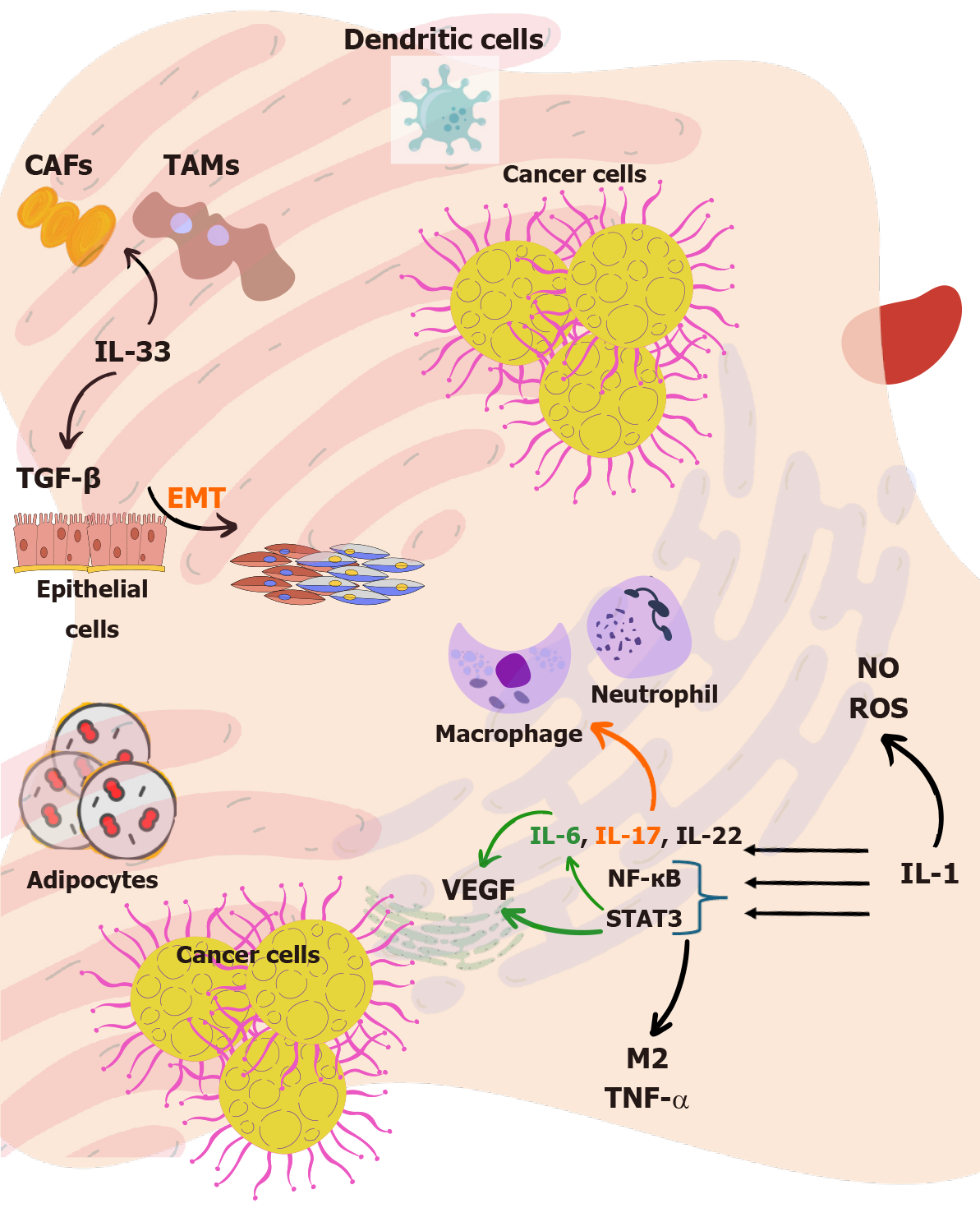Copyright
©The Author(s) 2025.
World J Exp Med. Jun 20, 2025; 15(2): 102285
Published online Jun 20, 2025. doi: 10.5493/wjem.v15.i2.102285
Published online Jun 20, 2025. doi: 10.5493/wjem.v15.i2.102285
Figure 1 Immunosuppressive tumor microenvironment development and progression.
The flow from tumor development to progression involves several key steps. Genetic mutations lead to tumor formation. The immune system attempts immunosurveillance, identifying and eliminating transformed cells. When immunosurveillance fails, cancer cells survive and continue to grow. This failure creates an immunosuppressive microenvironment, driven by the recruitment of immune cells such as regulatory T cells, myeloid-derived suppressor cells, and tumor-associated macrophages. These immune cells release immunosuppressive cytokines (transforming growth factor beta, interleukin-10, vascular endothelial growth factor), which inhibit cytotoxic T cells and natural killer cells. As a result, tumor growth and metastasis are facilitated, including processes like angiogenesis and extracellular matrix remodeling. Ultimately, the tumor evades immune responses and progresses further. ECM: Extracellular matrix; IL: Interleukin; MDSCs: Myeloid-derived suppressor cells; NK: Natural killer; TAMs: Tumor-associated macrophages; TGF-β: Transforming growth factor beta; Tregs: Regulatory T cells; VEGF: Vascular endothelial growth factor.
Figure 2 Complex cellular and non-cellular components within the TME.
CAFs: Cancer associated fibroblasts; EMT: Epithelial mesenchymal transition; IL: Interleukin; M2: Type 2 macrophages; NF-кB: Nuclear factor kappa-B; NO: Nitrous oxide; ROS: Reactive oxygen species; STAT3: Signal transducer and activator of transcription 3; TAMs: Tumor associated macrophages; TNF-α: Tumor necrosis factor-alpha; TGF-β: Transforming growth factor beta; VEGF: Vascular endothelial growth factor.
Figure 3 Molecular pathways of chronic inflammation leading to tumorigenesis.
Genetic mutations trigger tumor development. The immune system attempts to perform immunosurveillance by identifying and eliminating transformed cells, but this fails as cancer progresses. During tumorigenesis and chronic inflammation, the pathogens such as bacteria and viruses interact with toll-like receptors triggering nuclear factor kappa-B signaling produces proinflammatory cytokines such as tumor necrosis factor-alpha, interleukin (IL)-1, IL-6 and other chemokines. IL-1 production mediates recruitment of inflammatory cells and synthesis of reactive oxygen species leading to genetic mutations and DNA damage. Additionally, chronic inflammation aids in epithelial-to-mesenchymal transition that enhances the tumor development. EMT: Epithelial-to-mesenchymal transition; IL: Interleukin; NF-кB: Nuclear factor kappa-B; ROS: reactive oxygen species; TNF-α: Tumor necrosis factor-alpha.
- Citation: Issa H, Singh L, Lai KS, Parusheva-Borsitzky T, Ansari S. Dynamics of inflammatory signals within the tumor microenvironment. World J Exp Med 2025; 15(2): 102285
- URL: https://www.wjgnet.com/2220-315x/full/v15/i2/102285.htm
- DOI: https://dx.doi.org/10.5493/wjem.v15.i2.102285















